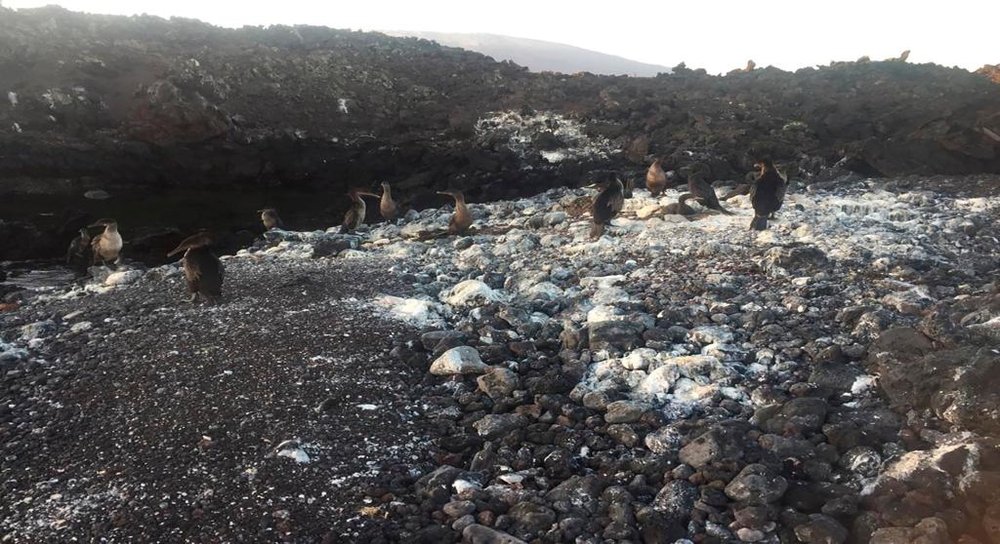
Galapagos penguins (Spheniscus mendiculus) and flightless cormorant (Phalacrocorax harrisi) are species that have long been studied in the Galapagos Islands. During the last three decades, monitoring of these populations has taken place in the west of the archipelago.
The ecological monitoring for these two species is carried out by scientists from the Charles Darwin Foundation (CDF) and technicians from the Galapagos National Park Directorate (GNPD). This year, CDF carried out monitoring between September 10th and 19th in the study areas of Isabela and Fernandina islands along with the Mariela islets, all located to the west of the archipelago. For 2020, the team estimated a total of 1,940 Galapagos penguins and 2,290 flightless cormorants, which were record numbers for these populations. In the case of the penguin, the record count was in 2006. Meanwhile, for the flightless cormorants, this is the record in all history censuses from 1977.
"We carry out the census by direct observation of the birds, where we travel closely along the coast in a small boat, or 'panga', and record all the individuals of all the species of birds in the marine-coastal zone that are found. While the count is being done, the team faces the waves, the wind, the sun, the cold, and the rain," says Gustavo Jiménez-Uzcátegui, CDF scientist and principal investigator of the CDF Seabirds Project.
About the study trip and the results
Due to the health emergency caused by the COVID-19, before the research trip, CDF and GNPD staff conducted a thorough planning of field activities taking into account the necessary biosecurity measures during the pandemic, in order to avoid possible contagion in the working group.
"An important result during this census was that 86% of the individuals counted were adults, both for the Galapagos penguin and flightless cormorant, which is a positive result, because it means that there are reproductive adult populations," adds Jiménez-Uzcátegui. In addition to these two species, 21 species of birds were registered, such as the blue-footed booby, the brown pelican, the sooty terns, among others, that use the coastal-marine area as feeding, resting and nesting sites.
It's important to mention that these species are distributed around the Galapagos, thanks to the ocean currents that surround the archipelago. These currents produce upwelling zones, on which the marine birds depend, and which are very sensitive areas to the changes experienced during the presence of El Niño and La Niña events. In 2020, the United States National Oceanic and Atmospheric Administration (NOAA) mentioned the presence of ‘La Niña’ event in the tropical areas where the islands are located. This situation is beneficial for marine species, because there are greater and more abundant outcrops, due to the fact that the surface temperatures of the equatorial sea are below the average in the East Central and Eastern Pacific Ocean. Therefore, there is greater primary productivity, greater quantity and quality of food for marine birds, and consequently, these species are favored in their reproduction.
The next monitoring trip for the Galapagos penguin and the flightless cormorant is scheduled for January 2021, while the annual census will be, as in the current year, in September 2021. "We hope that the seabird populations will gradually recover, and that the trend seen this year will continue. Perhaps in this way these populations can now compensate for the harsh effects of the El Niño event from the last two decades so that the population numbers can remain healthy long term," concludes Jiménez-Uzcátegui.
This ecological monitoring was carried out thanks to the support of several donors who finance the project for the Galapagos penguin, the Flightless cormorant and the Wave albatross. Additional thanks the support of the ABG (Biosecurity Agency for the Galapagos Islands), the GNPD and CDF.





